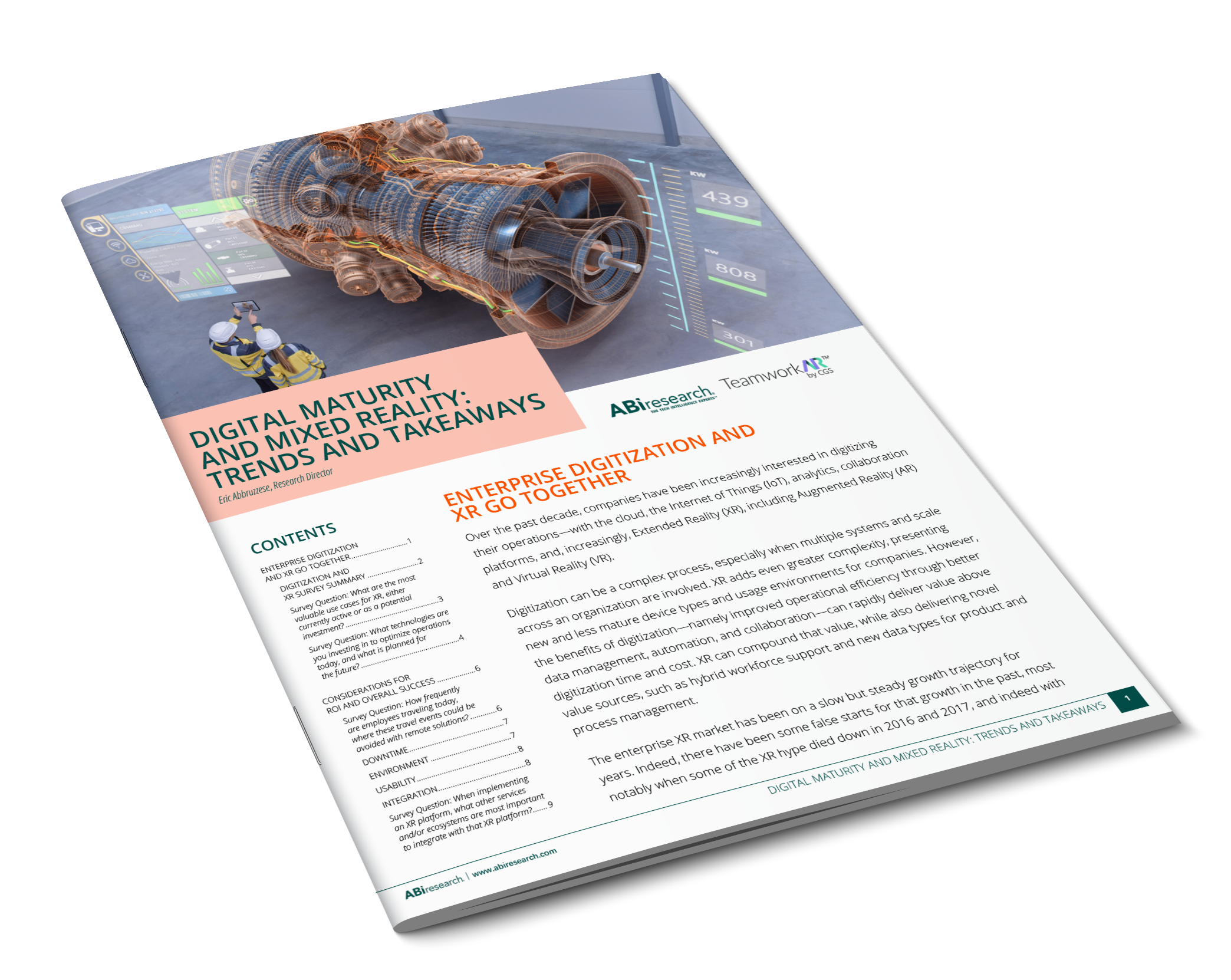Sponsored by ![]()
Over the past decade, companies have been increasingly interested in digitizing their operations—with the cloud, the Internet of Things (IoT), analytics, collaboration platforms, and, increasingly, Extended Reality (XR), including Augmented Reality (AR) and Virtual Reality (VR).
Digitization can be a complex process, especially when multiple systems and scale across an organization are involved. XR adds even greater complexity, presenting new and less mature device types and usage environments for companies. However, the benefits of digitization—namely improved operational efficiency through better data management, automation, and collaboration—can rapidly deliver value above digitization time and cost. XR can compound that value, while also delivering novel value sources, such as hybrid workforce support and new data types for product and process management.
The enterprise XR market has been on a slow but steady growth trajectory for years. Indeed, there have been some false starts for that growth in the past, most notably when some of the XR hype died down in 2016 and 2017, and indeed with the COVID-19 pandemic slowing new investment with uncertainty. Ironically, COVID-19 ended up being a powerful example of the value of digitization and XR for remote worker enablement, and much of that value is being pursued today.
Download the whitepaper to learn more.

